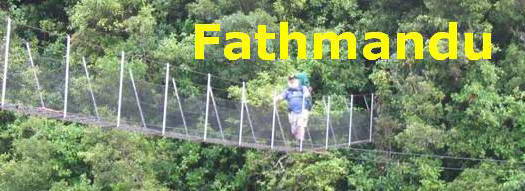|
14-21 November 2009
Norfolk Island Adventure
page 2
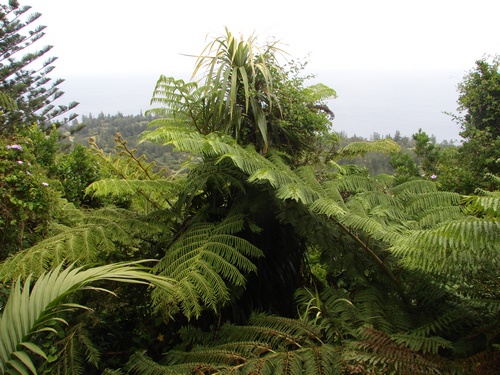
For the photographer accustomed to New Zealand light, and "blue" skies and seas, there is a surprise here. The light is much more intense, more brilliant, and both sky and the reflective sea will often burn out into white on film or photo. To our left is what looks like a group of New Zealand punga, but once again it's a relation. I think this is Cyathea brownii, the Norfolk Island Smooth Tree Fern. The punga is C. dealbata.
The Norfolk Island version is even taller than our mamaku, and has been recorded at around 20m.
(There is another tree fern on the island, Cyathea australis norfolkensis, the Rough Tree Fern. I have not been able differentiate these at this point.)
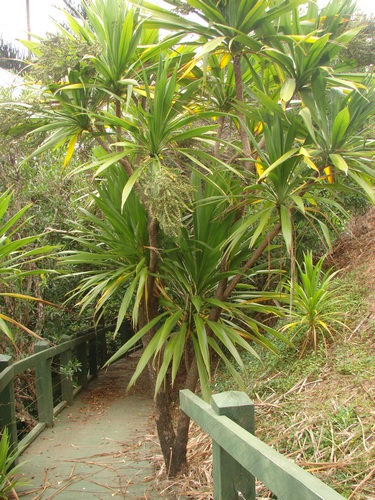
This one is a puzzle. It is recorded in the botanic garden as Cordyline australis, which is the same name as the New Zealand cabbage tree, but the leaves are softer and wider and the habit quite different. This young specimen shows it better.
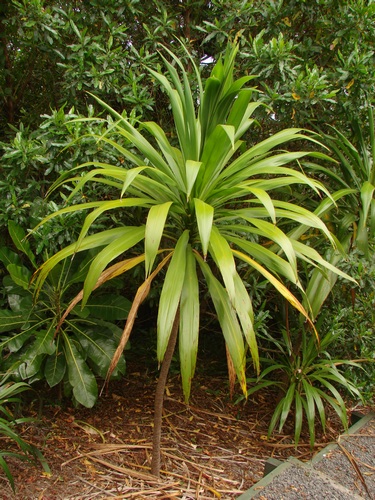
A glance at the web suggests it is likely to be not C. australis but C. obtecta. It is also referred to as the Norfolk Island breadfruit tree. The berries are popular with birds.
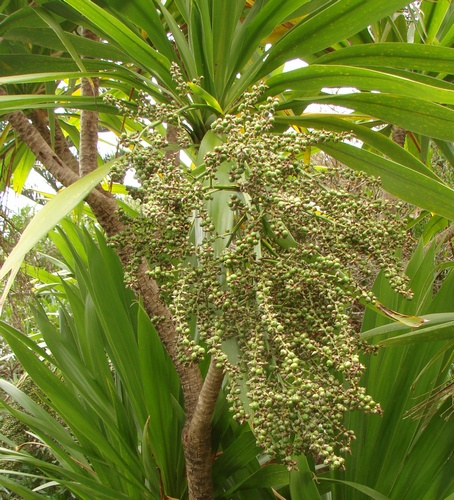
Here is another local phenomenon, the wild lemon. At one point, wild citrus grew all over the island, until an accidentally introduced black mildew threatened to exterminate them all. They are still scattered here and there in the bush, but for a New Zealander they are an unaccustomed taste of the exotic or surreal, sitting right next door to tree ferns.
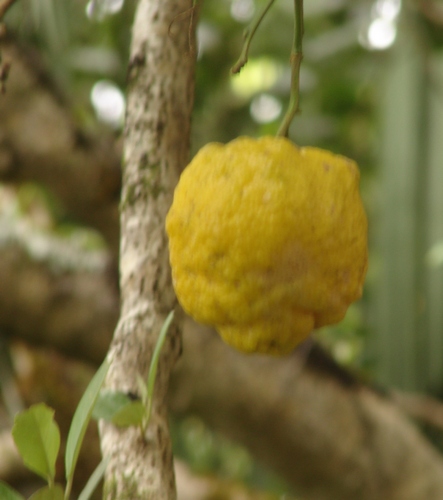
This also illustrates well the local caution about introducing potential agricultural pests. All produce is grown locally, none imported. As one local recipe book informed me, if you haven't eaten choko before, you certainly will before you have been on the island very long. There can be times when the sole available green vegetable at the markets is the choko. (To be fair, the subtropical climate seems to produce a better product than our colder one, less tough, more juicy, and native inventiveness has generated a host of interesting recipes based on it. I have long been a fan of them.)
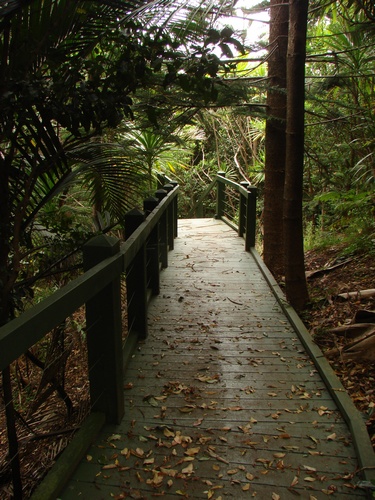
The boardwalk and steps end and the track opens out into a more open walk, filled with a lovely soft light
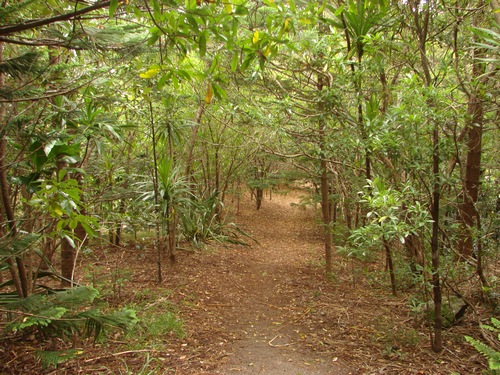
A young Norfolk pine is showing the new season's growth.
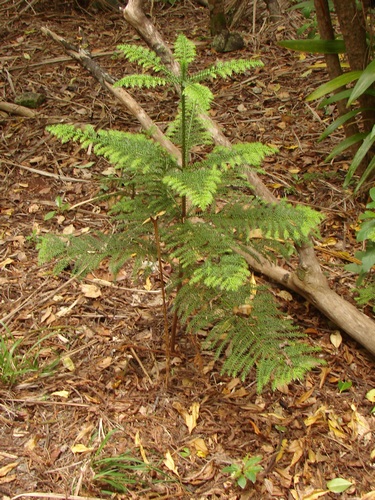
I am enjoying myself.
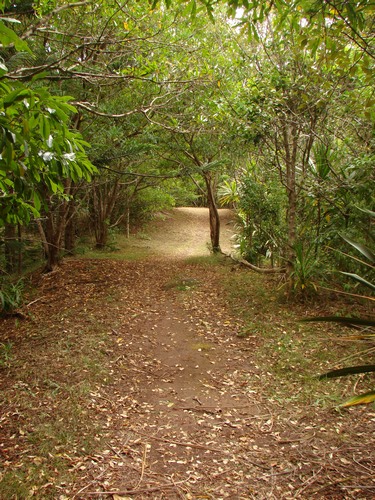
Here and there we can stop for a sit and a look at the top of the island and the sea and sky beyond, though once again, the camera is refusing to accommodate the light. Unfortunately I do not discover this until I am back home.
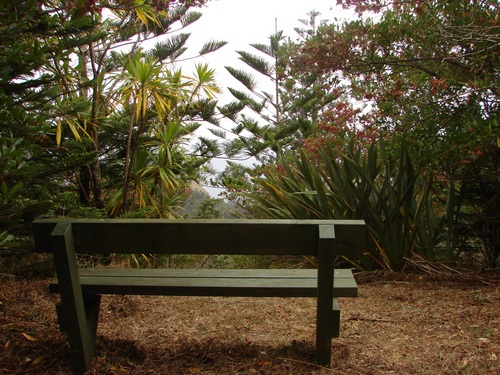
Here and there are large boulders, these nearly two metres high.
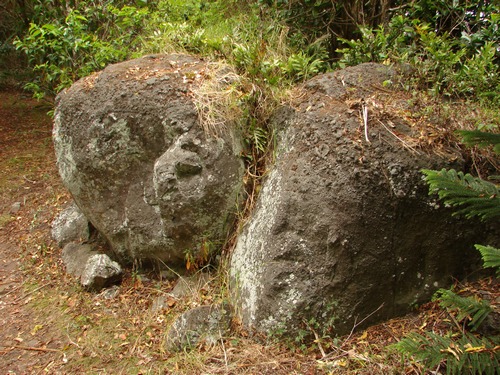
We begin a climb towards Mount Bates.
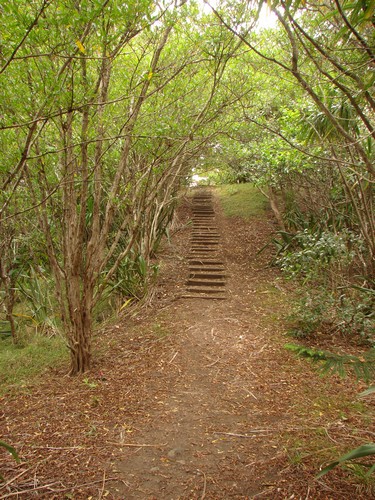
Another puzzle. The local flax is Phormium tenax, the same name as the New Zealand species, but it seems to me to be softer, and less vigorous. On the NZPCN page the following comment appears:
"Norfolk Island plants though uniform differ in subtle ways from the New Zealand forms of P. tenax. Further study into this variation is underway."
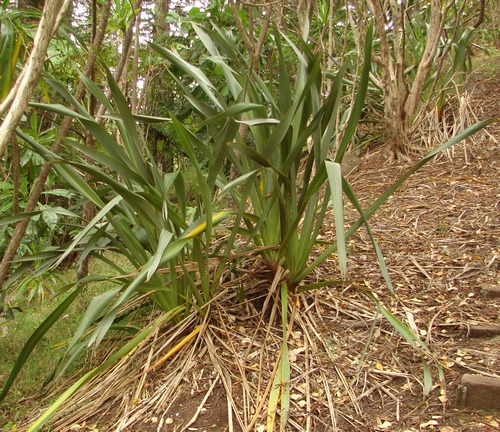
We move along, and for the most part this is a stroll. With my two hiking poles I feel something of a fraud.
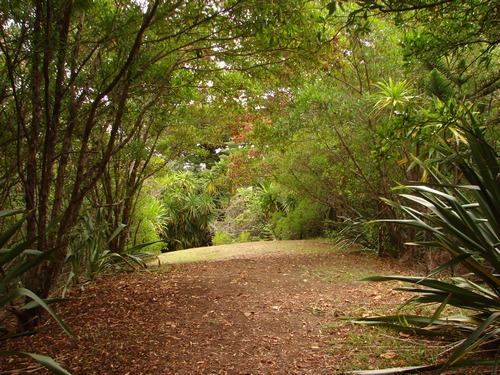
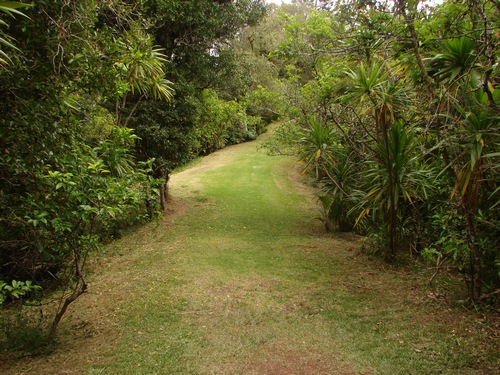
There's a whir of wings and a scarlet rosella scrambles out of the way. There are three or four of these in Bonny's garden and if I keep still on the deck they'll come right down on the grass nearby and walk around.
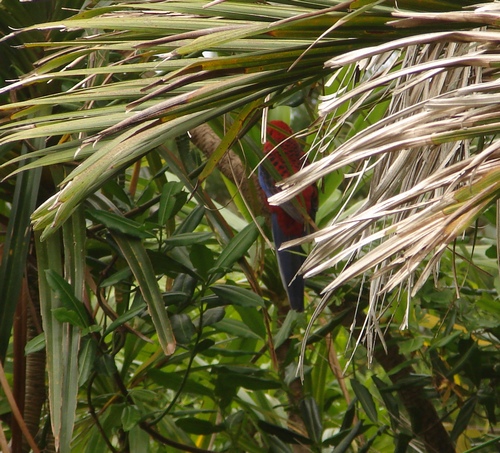
I wonder whether this is the oleander mentioned in the botanical gardens. It has a number of features characteristic of New Zealand pittosporums. Its classification is "vulnerable". It is an odd sensation walking through a forest with so many endangered or threatened species, especially when their New Zealand cousins that I am familiar with are robust everyday sights.
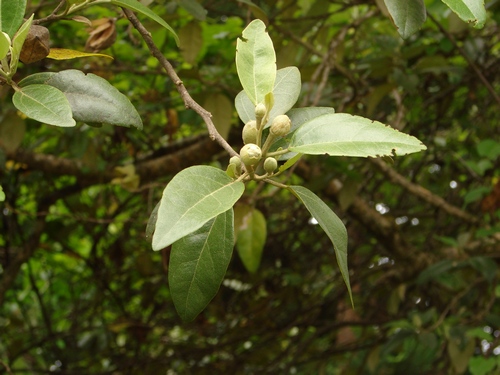
|
